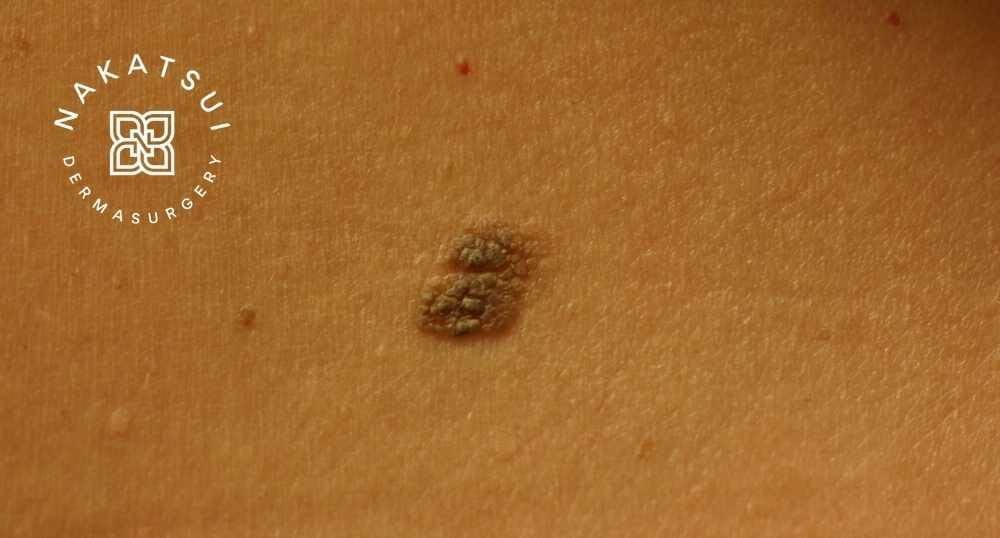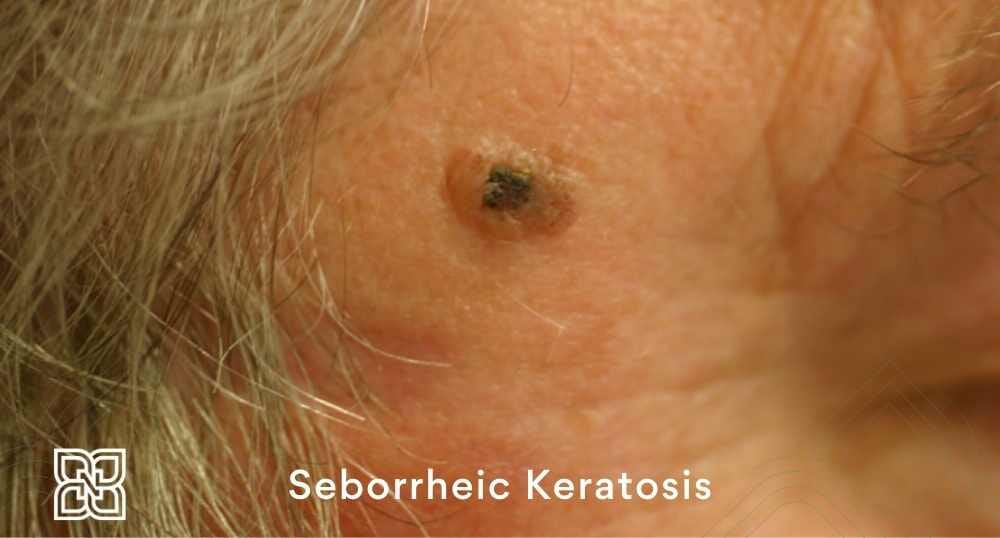Seborrheic Keratosis


What is a Seborrheic Keratosis?
Seborrheic keratoses are noncancerous (benign) skin growths that many people develop as they age. They often appear on the face, back, or chest, but can occur on other parts of the body. Some people will develop 1 or 2 lesions whereas others will develop over a hundred!

Seborrheic keratoses are harmless, common skin growths that may first appear during adult life. As time goes by, more growths can appear. Some people have a very large number of them. Seborrheic keratoses may appear on both covered and uncovered parts of the body; they are not caused by sunlight. The tendency to develop seborrheic keratoses is inherited. Seborrheic keratoses never become malignant.
What does a Seborrheic Keratosis look like?
They begin as slightly raised, light brown, red or white spots. They gradually thicken and take on a rough, wart-like surface and with time they may slowly become darker and may turn black. These color changes are harmless. Seborrheic keratoses are superficial and look as if they were stuck on the skin. The most common texture is rough, with a bumpy, grainy surface that crumbles easily. However, they also may be smooth and waxy. While some are tiny, others may occasionally grow larger than 5 cm in diameter.
Important to know: Most people will develop at least one seborrheic keratosis during their lifetime.1
Seborrheic Keratoses may be mistaken for:
- warts
- moles
- skin tags
- skin cancer

Who is likely to get Seborrheic Keratoses?
Most people get these growths when they are middle-aged or older. Because they begin at a later age and can have a wart-like appearance, seborrheic keratoses are often called “barnacles.” It’s possible to have just one of these growths, but most people develop over a hundred. Some growths may have a warty surface while others look like dabs of warm, brown candle wax on the skin.2
Tips for managing Seborrheic Keratoses
Most seborrheic keratoses do not require treatment. You should see a dermatologist if the growth:
- Grows quickly, turns black, itches, or bleeds (possible signs of skin cancer)
- Appears suddenly, along with many other new skin growths (possible sign of cancer inside the body)
- Differs from what a typical seborrheic keratosis looks like
- Looks dry, flat, rough, and scaly (it could be an actinic keratosis, which can progress to a type of skin cancer)
- Becomes easily irritated, such as from shaving or clothes rubbing against it
- Displeases you and you want it removed2
Important to know: Do not try to remove a seborrheic keratosis yourself. There may be a risk of infection.2
Seborrheic Keratoses Treatments
Seborrheic keratoses can easily be removed. Surgery (scraping), liquid nitrogen sprays, lasers, and CellFX (a new treatment using billionths of a second pulses of electricity) are the treatments of choice. We use the Ultrapulse carbon dioxide resurfacing laser, the PicoWay laser, or CellFX to treat seborrheic keratoses. The only reason for removing a seborrheic keratosis is your wish to get rid of it because it is unsightly, itches, or annoys you by rubbing against your clothes.
1 https://www.webmd.com/skin-problems-and-treatments/picture-of-seborrheic-keratosis
2 https://www.aad.org/public/diseases/a-z/seborrheic-keratoses-overview
